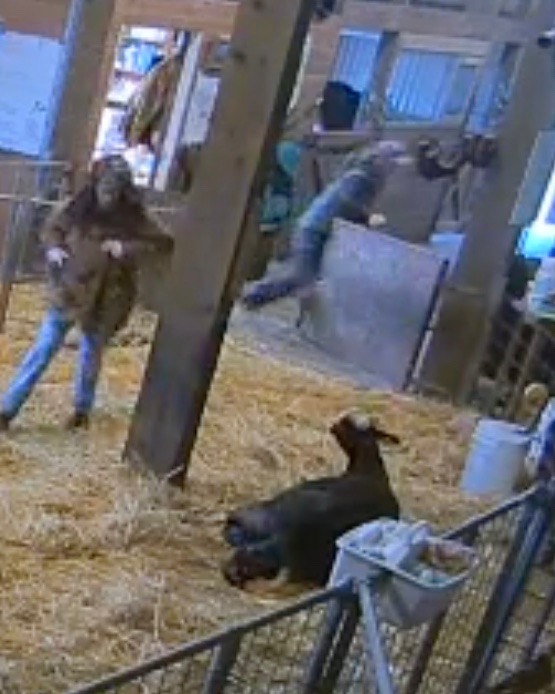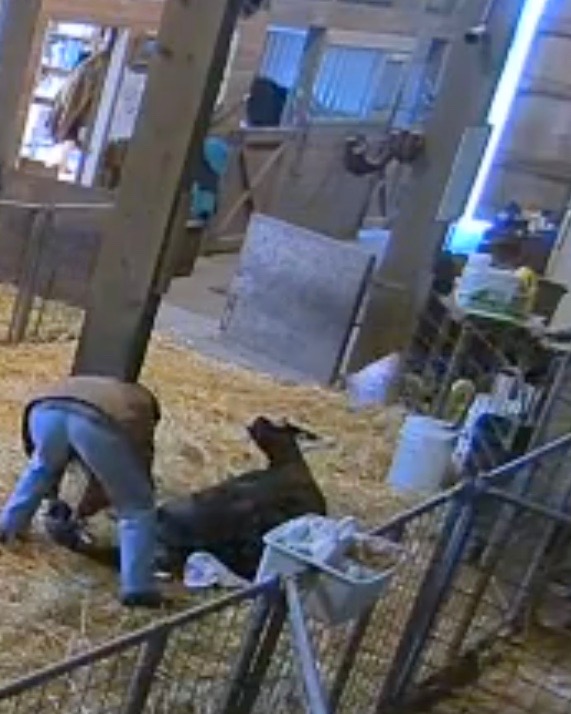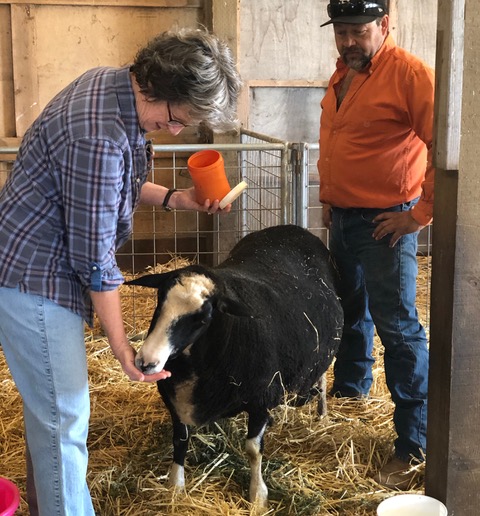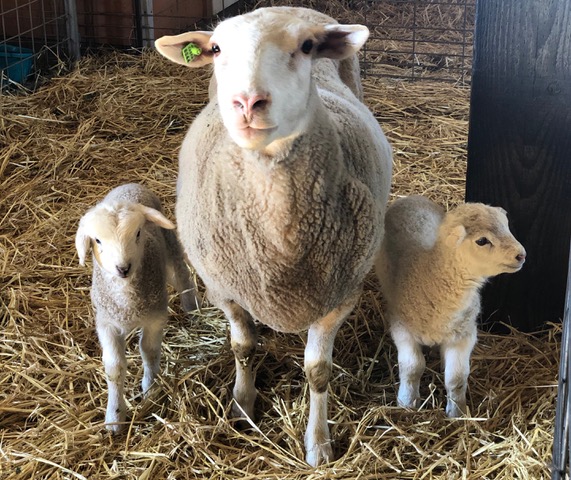We know we are well into lambing when the problems, large and small, begin to add up and take most of our time. So, here we are. Good Daughter, a five-year-0ld East Friesian who has lambed without problems in the past, was down for a few days before she lambed, unable to get up on her own. At least for most of that time she maintained a good appetite. When a ewe stops eating, that means she is either going into labor or sliding into pregnancy toxemia, the inability to take in enough calories to support her belly full of lambs.
Good Daughter had been in the barn for two days because of her difficulty getting up, and yesterday stopped eating, which had us worried. So we were overjoyed when, late in the afternoon, she clearly went into hard labor. We were prepared for a long evening, because with these high-risk pregnancies the ewes often run out of energy for active labor before all their lambs are born, there are often quads and those quads generally get tangled up and require intervention. So Linda and I were caught off guard when we were in the tack room, looking at Good Daughter on the monitor, and suddenly saw her push out a lamb! With ewes who were that big, there is generally a LOT of birth fluid, and lambs born into all that slop can easily aspirate and drown with their first breath. So the barn cam caught a very funny clip of us both tearing out of the tack room, Linda heading for Good Daughter, and me heading for the stash of towels on the cart, and the nasal syringe for clearing the lamb’s throat. Linda gets to the lamb, and then you can see me from the side, tossing her towels. All three lambs were born within an hour, two girls and a boy, and all were healthy.
Good Daughter was happy with her lambs, but still unable to get up, and we have been getting her up and walking her around the barn, trying to get her strength back.



Then there are the problems with Taylor and Nan. Nan has decided that she doesn’t like little Hebe, and pushes her away every time she tries to nurse. And Taylor, our first East Friesian to lamb, and a first-time mother, loves her lambs, but doesn’t understand that part of loving them is letting them nurse. She walks away every time they try. We have investigated all the usual causes, none of the lambs in question has sharp teeth, the ewe’s teats are not inflamed and they don’t seem to have pain associated with nursing. They are just not letting their lambs nurse. The “cure” for this is the stocks–technically known as a grafting stanchion. The ewe is put in the jug with her head in a simple stanchion so that she can’t walk away from, or head-butt, her lamb. She can eat and drink and lay down, but the lambs can nurse. Often after a few days of this, the ewe accepts the lamb. So we are hopeful.

One thing that is clearly apparent is that most of our lambing problems are associated with my beloved East Friesians. They are wonderful, friendly sheep, but not good all-purpose sheep. East Friesian dairy sheep have been selected for so long for one thing–milk production. Their lambs are often born weak, sometimes their mothering is very poor (in most dairies the lambs are pulled from the mothers and the mothers aren’t required to show any skill at mothering), the ewes have high rates of triplets and quads and that wears their bodies out. Their udders can be enormous, which is great for a dairy but not so good for nursing lambs, who often have a difficult time nursing from the gargantuan udders and swollen teats. We have decided not to breed any East Friesians next year. We will keep our most beloved ewes, and the ones who have the nicest fleeces for our friend Jackie’s felting business, but no more high-risk pregnancies for us.
